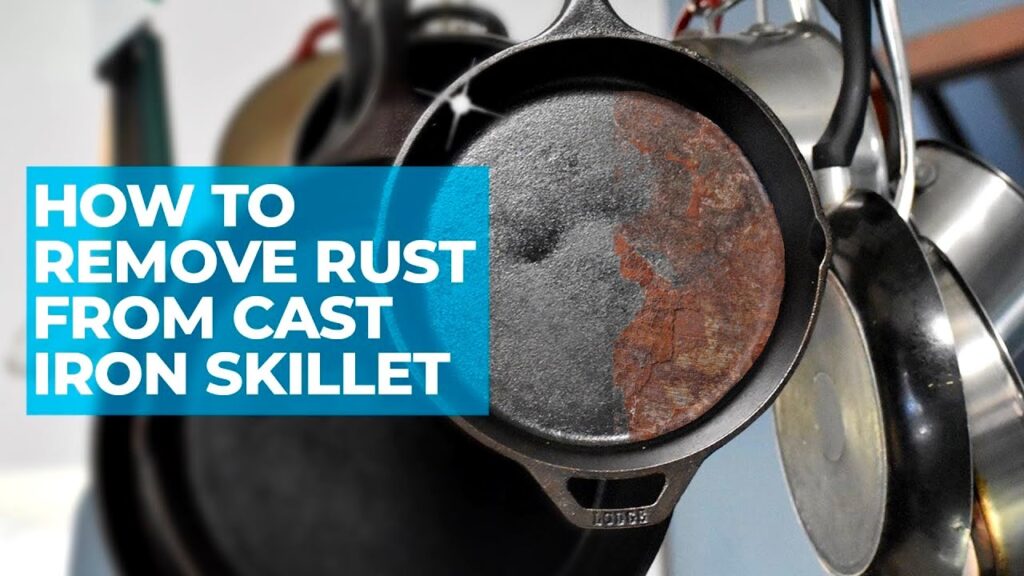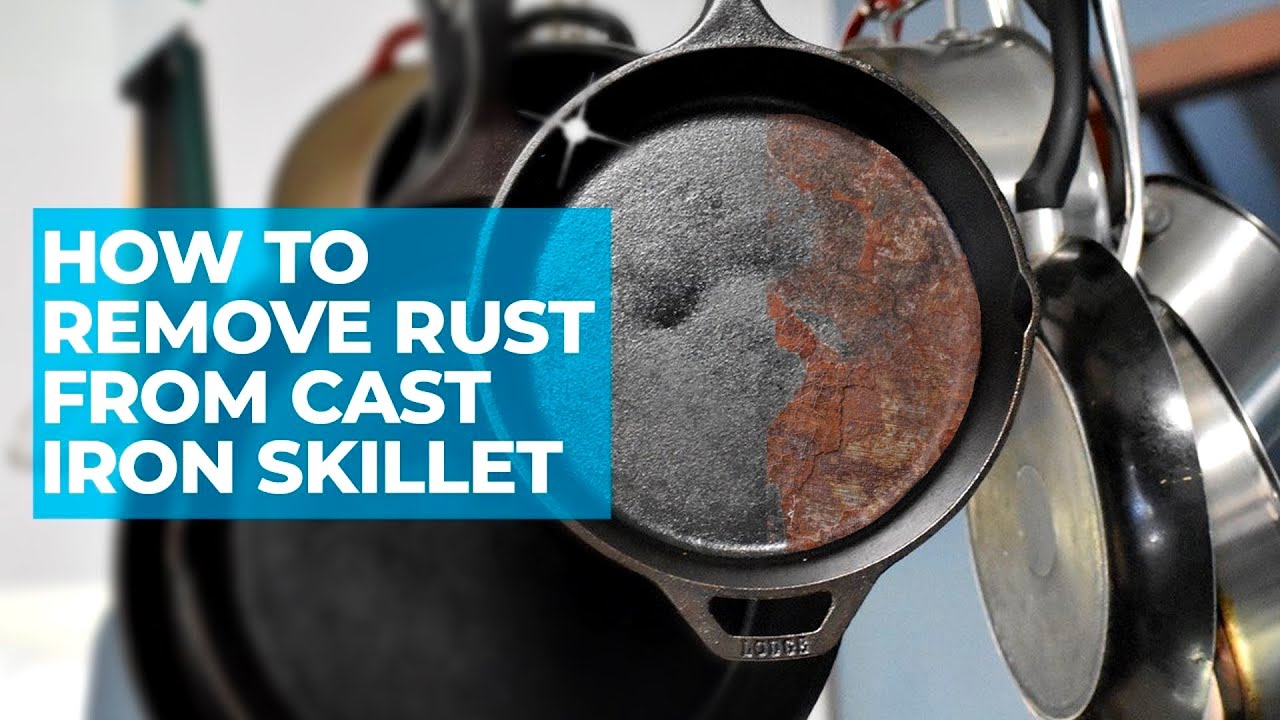
Effective Methods for Removing Rust from Iron: A Comprehensive Guide
Rust, that reddish-brown flaky coating, is the bane of any iron object’s existence. It’s not just unsightly; it weakens the metal, eventually causing it to crumble away. Understanding how to effectively remove rust from iron is crucial for maintaining tools, restoring antiques, and preserving the integrity of countless objects around us. This guide provides a comprehensive overview of various methods, from simple household solutions to more advanced techniques, ensuring you can tackle rust removal with confidence. We’ll delve into the science behind rust formation and offer practical, step-by-step instructions for each method, empowering you to keep your iron items in top condition.
Understanding Rust Formation
Before diving into rust removal, it’s helpful to understand how rust forms in the first place. Rust is the result of a chemical reaction called oxidation. When iron is exposed to oxygen and moisture, it forms iron oxide, commonly known as rust. The process is accelerated by the presence of electrolytes, such as salt, which is why coastal environments and road salt can wreak havoc on iron structures. Understanding this process helps in choosing the right method for removing rust from iron.
Safety First: Protective Gear
Before you begin any rust removal process, prioritize your safety. Always wear protective gear, including:
- Gloves: To protect your skin from chemicals and sharp edges.
- Eye protection: Safety glasses or goggles prevent rust particles and cleaning solutions from entering your eyes.
- Mask: A dust mask or respirator is essential when dealing with loose rust or using abrasive methods.
- Ventilation: Work in a well-ventilated area, especially when using chemical rust removers.
Mechanical Methods for Removing Rust from Iron
Mechanical methods involve physically removing the rust. These methods are often preferred for their simplicity and effectiveness, especially on thick layers of rust.
Wire Brushing
Wire brushing is a straightforward method for removing rust from iron. Use a wire brush to scrub away the rust. For larger areas, a power drill with a wire brush attachment can significantly speed up the process. Be sure to apply consistent pressure and work in overlapping strokes. This method is ideal for items that can withstand some abrasion. Remember to wear your safety gear, as wire brushing can create a lot of dust and debris.
Sanding
Sanding is another effective mechanical method. Start with a coarse-grit sandpaper to remove the bulk of the rust, then gradually move to finer grits to smooth the surface. This method is particularly useful for preparing iron surfaces for painting or coating after removing rust from iron. Like wire brushing, sanding can generate dust, so proper ventilation and a mask are crucial.
Grinding
For heavy rust buildup, a grinder can be used. This method is very effective but requires caution. Use a grinding wheel designed for metal and apply light pressure to avoid damaging the iron. Grinding is best suited for experienced users and should only be used on items that can withstand the aggressive nature of the process. Always wear eye protection when grinding, as sparks and metal fragments can be dangerous. The goal is effective removing rust from iron without causing further damage.
Sandblasting
Sandblasting is a more advanced mechanical method that uses compressed air to propel abrasive particles (sand, glass beads, or other materials) against the rusted surface. This method is highly effective for removing rust from iron in hard-to-reach areas and can quickly strip away even thick layers of rust. However, it requires specialized equipment and should be performed in a controlled environment to contain the abrasive material. Sandblasting is often used for larger items like car frames or outdoor furniture.
Chemical Methods for Removing Rust from Iron
Chemical methods involve using chemical solutions to dissolve or convert the rust. These methods are often less labor-intensive than mechanical methods but require careful handling of chemicals.
Vinegar
Vinegar, specifically white vinegar, is a readily available and relatively safe option for removing rust from iron. Vinegar contains acetic acid, which reacts with rust to dissolve it. Submerge the rusted item in vinegar for several hours or overnight, depending on the severity of the rust. After soaking, scrub the item with a wire brush or scouring pad to remove the loosened rust. Rinse thoroughly with water and dry completely to prevent further rusting. Vinegar is a good choice for smaller items or those with light rust.
Lemon Juice and Salt
A mixture of lemon juice and salt can also be effective. The citric acid in lemon juice, combined with the abrasive action of salt, helps to break down rust. Apply a thick paste of lemon juice and salt to the rusted area, let it sit for a few hours, and then scrub with a brush or pad. Rinse and dry thoroughly. This method is similar to using vinegar and is suitable for lighter rust removal. It’s a simple and natural way of removing rust from iron.
Baking Soda
Baking soda, or sodium bicarbonate, is a mild abrasive that can help remove rust. Make a paste of baking soda and water, apply it to the rusted area, and let it sit for a while. Then, scrub with a brush or pad. Baking soda is less aggressive than vinegar or lemon juice but can be effective for removing surface rust. It’s also a safe and non-toxic option. This is a gentle approach to removing rust from iron.
Commercial Rust Removers
Numerous commercial rust removers are available in the market. These products typically contain stronger acids or chelating agents that dissolve rust more quickly and effectively. Follow the manufacturer’s instructions carefully, as these products can be corrosive and may require specific safety precautions. Always wear gloves and eye protection when using commercial rust removers. Some common ingredients in these removers include phosphoric acid, hydrochloric acid, and oxalic acid. They offer a potent solution for removing rust from iron.
Evapo-Rust
Evapo-Rust is a popular non-toxic rust remover that uses a process called selective chelation. It targets and removes rust without harming the underlying metal. Simply submerge the rusted item in Evapo-Rust for the recommended time, rinse, and dry. Evapo-Rust is reusable and environmentally friendly, making it a preferred choice for many users. It provides an effective and safer way of removing rust from iron.
Phosphoric Acid
Phosphoric acid is a chemical compound used in many commercial rust converters. It reacts with rust to form a black, inert coating of iron phosphate, which protects the underlying metal from further corrosion. Phosphoric acid can be applied directly to the rusted surface, allowed to dry, and then painted over. This method is often used on vehicles and other metal structures. It converts the existing rust, effectively removing rust from iron and preventing future corrosion.
Electrolysis for Removing Rust from Iron
Electrolysis is a more advanced method that uses an electric current to remove rust. It involves setting up an electrolytic cell with the rusted object as the cathode (negative electrode) and a piece of scrap metal as the anode (positive electrode). The electrodes are submerged in an electrolyte solution, such as washing soda (sodium carbonate) dissolved in water. When an electric current is applied, the rust is converted back to iron and deposited on the anode. Electrolysis is a highly effective method for removing rust from iron, especially in intricate or hard-to-reach areas. However, it requires some technical knowledge and careful setup. [See also: Electrolysis Rust Removal Guide]
Preventing Future Rust
Once you’ve successfully removed the rust, it’s important to take steps to prevent it from returning. Here are some preventive measures:
- Keep Iron Dry: Moisture is a key ingredient in the rust formation process. Store iron items in a dry environment.
- Apply Protective Coatings: Paint, varnish, oil, or wax can create a barrier between the iron and the environment, preventing rust.
- Use Rust Inhibitors: Rust inhibitors can be added to water or other liquids to prevent corrosion.
- Regular Maintenance: Inspect iron items regularly for signs of rust and address them promptly.
Specific Applications of Rust Removal
The methods for removing rust from iron can be applied to various objects, each requiring slightly different approaches:
Removing Rust from Tools
Tools are particularly susceptible to rust due to frequent exposure to moisture and dirt. Regular cleaning and oiling can help prevent rust. For existing rust, wire brushing, sanding, or soaking in vinegar can be effective. After removing rust from iron tools, apply a thin coat of oil to protect them.
Removing Rust from Cast Iron Cookware
Cast iron cookware requires special care to prevent rust. After each use, wash and dry the cookware thoroughly, then apply a thin layer of oil to season it. For rust removal, gentle scrubbing with steel wool or a scouring pad, followed by re-seasoning, is recommended. Avoid harsh chemicals or abrasive methods that can damage the seasoning. Proper seasoning is crucial for preventing future instances of removing rust from iron cookware.
Removing Rust from Car Parts
Car parts, especially those exposed to the elements, are prone to rust. Sandblasting, grinding, and chemical rust removers are commonly used for removing rust from iron car parts. After rust removal, apply a rust-inhibiting primer and paint to protect the metal. [See also: Car Rust Repair Guide]
Conclusion
Removing rust from iron is an essential task for maintaining and preserving iron objects. By understanding the causes of rust and employing the appropriate removal methods, you can effectively combat corrosion and extend the lifespan of your iron items. Whether you choose mechanical methods, chemical solutions, or electrolysis, remember to prioritize safety and follow the instructions carefully. Regular maintenance and preventive measures are key to keeping rust at bay and ensuring your iron items remain in good condition for years to come. From simple household remedies to advanced techniques, the power to fight rust is in your hands.

